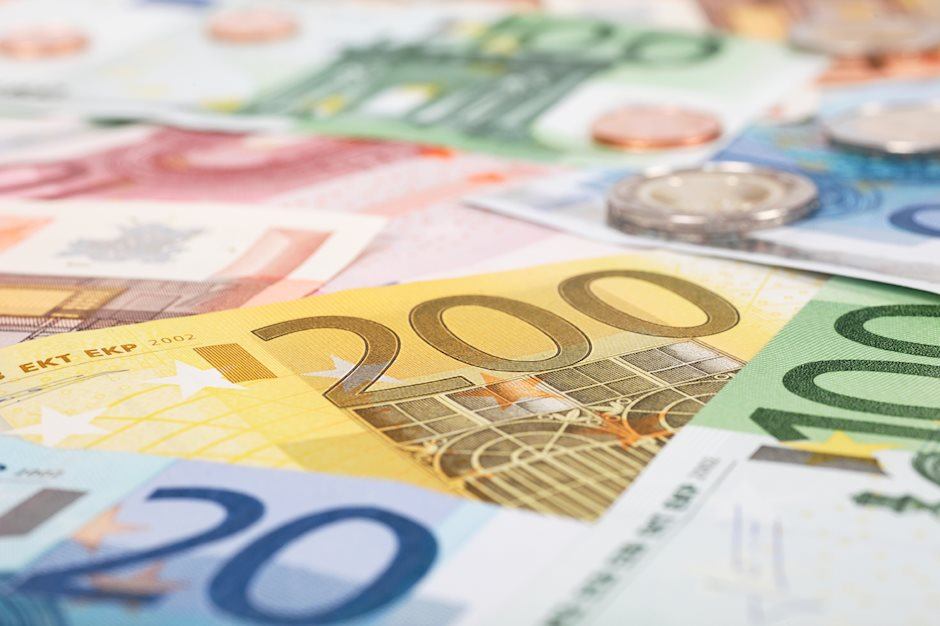EUR/USD depreciates to near 1.0550 due to caution surrounding the Fed’s policy outlook
- EUR/USD struggles as the US Dollar advances due to increasing caution surrounding the Fed’s rate cut decision in December.
- The stronger US PCE data indicated a solid growth in consumer spending in October.
- Eurozone HICP headline and core inflation are projected to show annualized increases in November.

EUR/USD edges lower to near 1.0550 during the Asian trading hours on Thursday. This downside of the pair could be attributed to the improved US Dollar (USD) amid the cautious mood surrounding the Federal Reserve’s (Fed) interest rate decision in December, following Wednesday's robust inflation data. Markets may witness thin trading due to the US Thanksgiving holiday.
This latest US inflation report indicated solid growth in consumer spending for October, but it also highlighted a stagnation in progress toward lowering inflation, keeping the Fed on alert. The US Personal Consumption Expenditures (PCE) Price Index increased by 2.3% year-over-year in October, up from 2.1% in September. Meanwhile, the core PCE Price Index, which excludes volatile food and energy prices, rose by 2.8%, slightly higher than the 2.7% recorded the previous month.
According to the CME FedWatch Tool, futures traders are now pricing in a 68.1% chance that the Fed will cut rates by a quarter point in December, up from 59.4%, a day ago. Nonetheless, they anticipate the Fed leaving rates unchanged at its January and March meetings.
The Euro (EUR) faces a bearish outlook as European Central Bank (ECB) policymakers express concerns about the Eurozone's current and future economic growth. A rate cut from the ECB in December appears highly likely, though the market remains divided on the expected size of the reduction.
Traders are now turning their attention to Friday's release of the Eurozone Harmonized Index of Consumer Prices (HICP) inflation data. Preliminary figures for both headline and core inflation in November are projected to show annualized increases, which could heighten investor unease.
Euro FAQs
The Euro is the currency for the 19 European Union countries that belong to the Eurozone. It is the second most heavily traded currency in the world behind the US Dollar. In 2022, it accounted for 31% of all foreign exchange transactions, with an average daily turnover of over $2.2 trillion a day. EUR/USD is the most heavily traded currency pair in the world, accounting for an estimated 30% off all transactions, followed by EUR/JPY (4%), EUR/GBP (3%) and EUR/AUD (2%).
The European Central Bank (ECB) in Frankfurt, Germany, is the reserve bank for the Eurozone. The ECB sets interest rates and manages monetary policy. The ECB’s primary mandate is to maintain price stability, which means either controlling inflation or stimulating growth. Its primary tool is the raising or lowering of interest rates. Relatively high interest rates – or the expectation of higher rates – will usually benefit the Euro and vice versa. The ECB Governing Council makes monetary policy decisions at meetings held eight times a year. Decisions are made by heads of the Eurozone national banks and six permanent members, including the President of the ECB, Christine Lagarde.
Eurozone inflation data, measured by the Harmonized Index of Consumer Prices (HICP), is an important econometric for the Euro. If inflation rises more than expected, especially if above the ECB’s 2% target, it obliges the ECB to raise interest rates to bring it back under control. Relatively high interest rates compared to its counterparts will usually benefit the Euro, as it makes the region more attractive as a place for global investors to park their money.
Data releases gauge the health of the economy and can impact on the Euro. Indicators such as GDP, Manufacturing and Services PMIs, employment, and consumer sentiment surveys can all influence the direction of the single currency. A strong economy is good for the Euro. Not only does it attract more foreign investment but it may encourage the ECB to put up interest rates, which will directly strengthen the Euro. Otherwise, if economic data is weak, the Euro is likely to fall. Economic data for the four largest economies in the euro area (Germany, France, Italy and Spain) are especially significant, as they account for 75% of the Eurozone’s economy.
Another significant data release for the Euro is the Trade Balance. This indicator measures the difference between what a country earns from its exports and what it spends on imports over a given period. If a country produces highly sought after exports then its currency will gain in value purely from the extra demand created from foreign buyers seeking to purchase these goods. Therefore, a positive net Trade Balance strengthens a currency and vice versa for a negative balance.
Author

Akhtar Faruqui
FXStreet
Akhtar Faruqui is a Forex Analyst based in New Delhi, India. With a keen eye for market trends and a passion for dissecting complex financial dynamics, he is dedicated to delivering accurate and insightful Forex news and analysis.
















